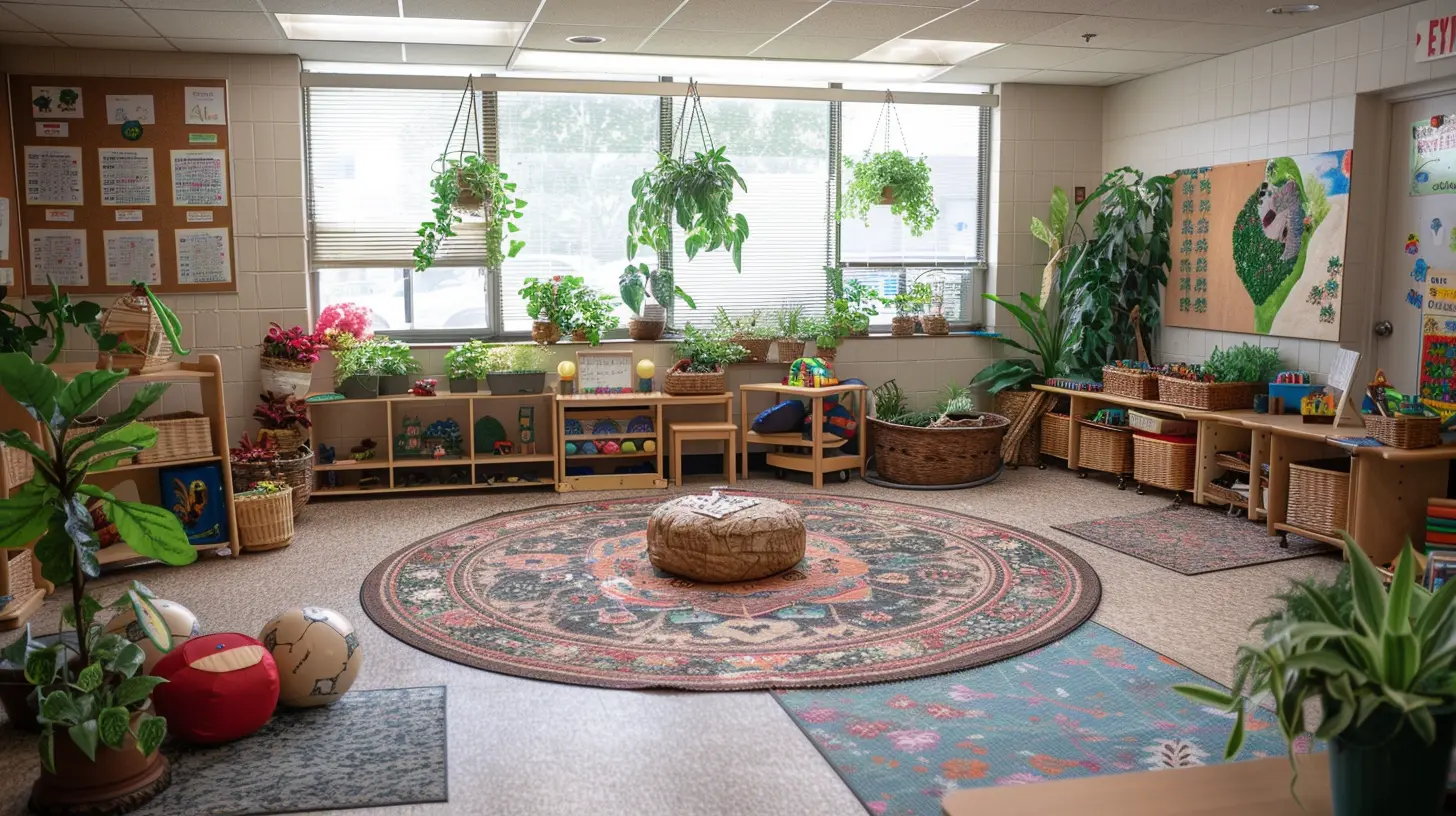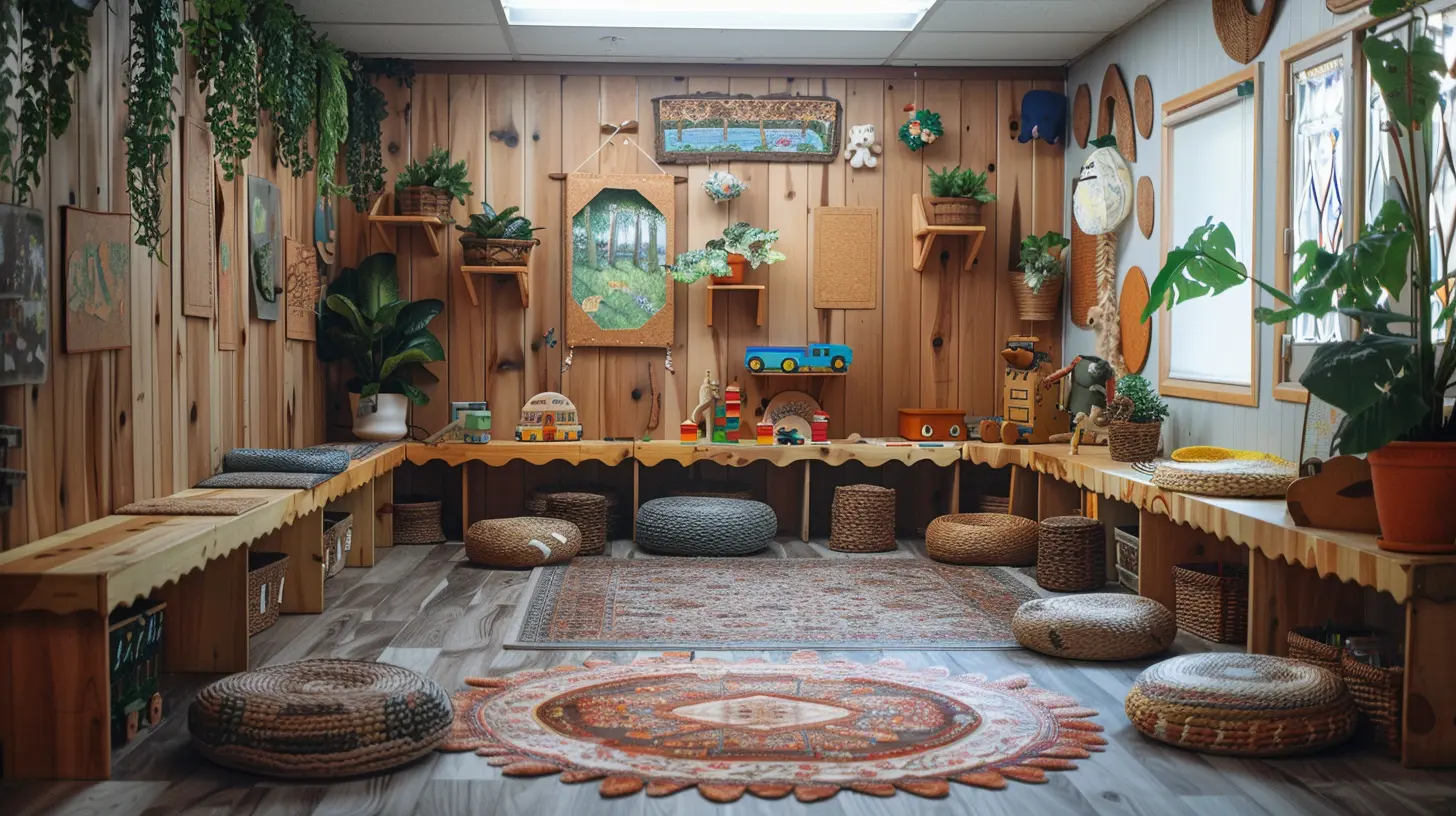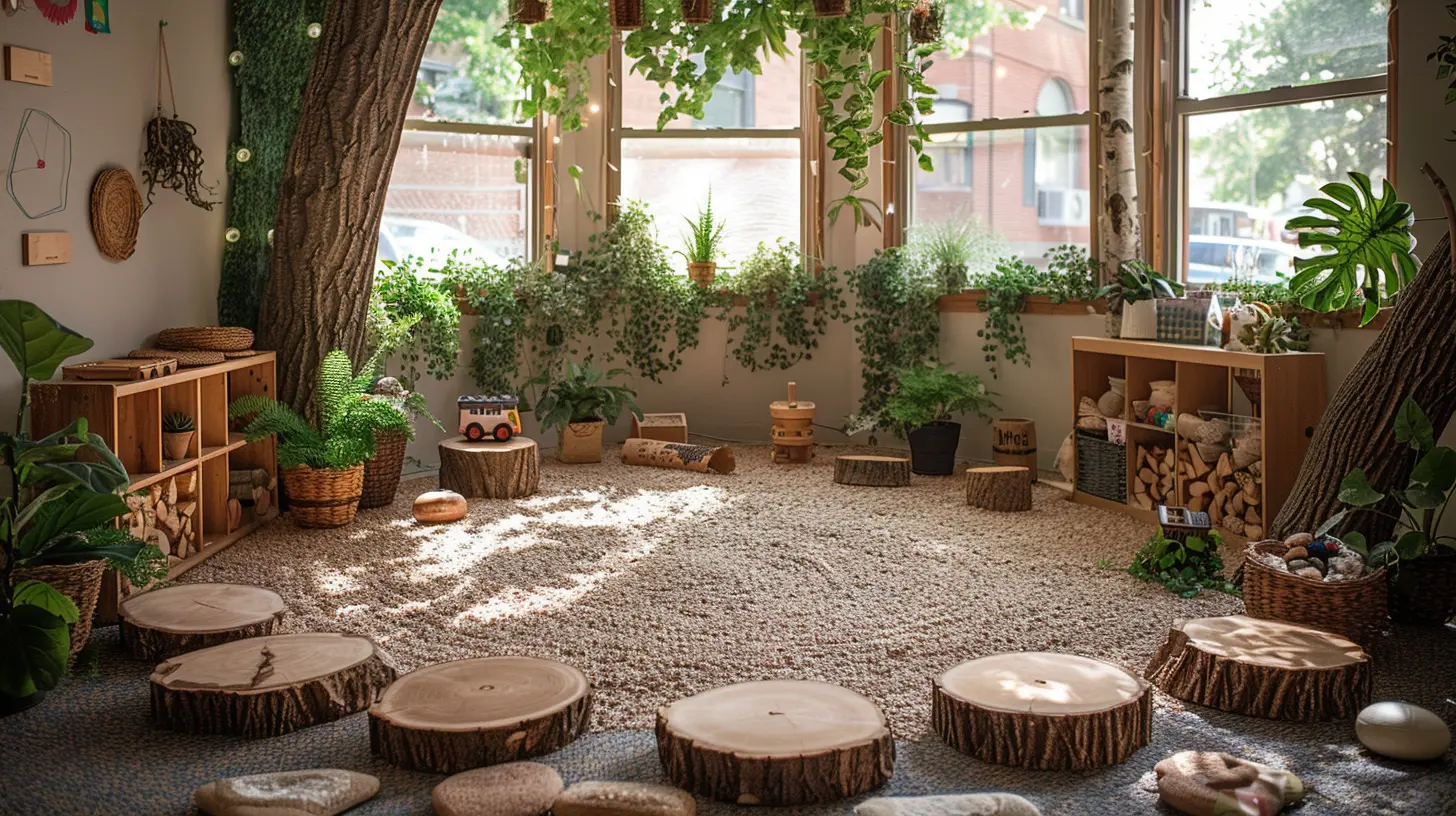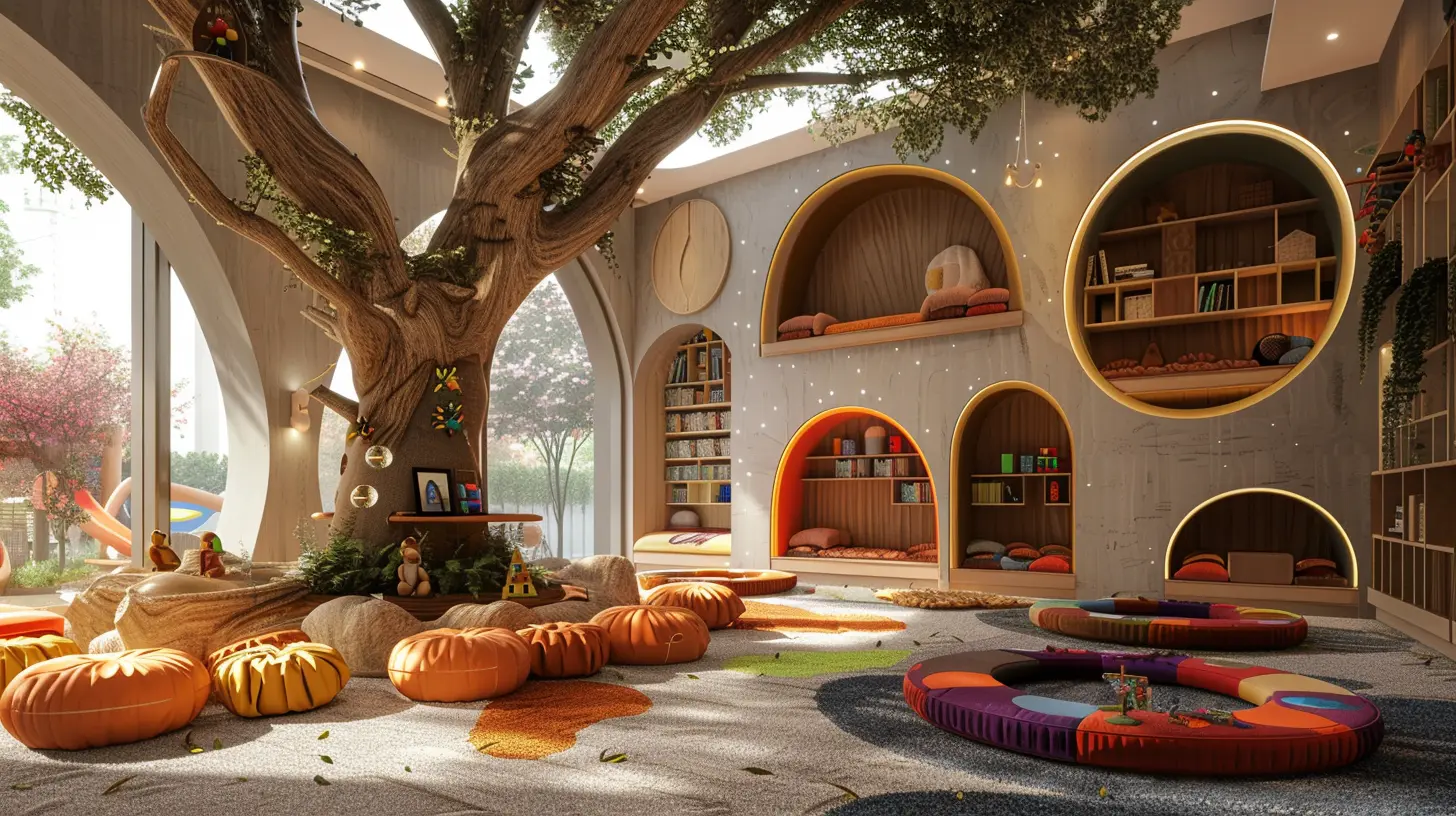Creating Safe and Nurturing Spaces for Early Learners
4 October 2025
Okay, so picture this: You've just walked into a preschool classroom. There are finger paintings hanging from every corner, a questionable amount of glitter on the floor (which seems to have a life of its own), and tiny humans running around with more energy than a double espresso shot. Sounds like chaos, right? But in the middle of this adorable whirlwind lies one of the most important foundations for a child’s future — a safe and nurturing environment.
Now, if you're thinking, "How hard can it be?" — well, buckle up, friend. Because creating spaces where early learners can thrive is like building a fortress of love, safety, and learning... all while ducking rogue paper airplanes!
Let’s dive into the colorful, glue-stick-smelling world of early childhood environments. Let's build a space that screams (in a nice, inside-voice kind of way), “Hey kiddo, you're safe and you matter here!”
Why Safety and Nurturing Matter (Like, A Lot)
Let’s start with the why. Why go through all the trouble of padding every corner, color-coordinating learning zones, and making sure glitter stays in its designated sparkly corner?Because early learners — those bright-eyed, often-snotty-nosed bundles of curiosity — are laying down the neural blueprints for the rest of their lives. And just like you wouldn’t build a skyscraper on a swamp (unless you're looking for a disaster movie), kids need a solid emotional and physical foundation.
Safe and nurturing environments are about creating a space where kids can explore, fail, try again, learn, laugh, and possibly eat crayons (hey, we try our best). These environments develop:
- Secure attachments (aka trusting grown-ups not to disappear mid-snack)
- Emotional resilience (like learning it's okay if someone else got the sparkly pink crayon first)
- Cognitive growth (hello counting bears and ABC rugs!)
The Physical Environment: Not Just a Fancy Pinterest Board
Alright, let’s talk decor — but not the kind you find in a rustic farmhouse kitchen. We’re talking functional, magical, and toddler-proof.1. Safety First, Always
No one can learn if they’re worried about falling off a chair that’s taller than Mount Everest (in kid terms). So, what does safe look like?- Rounded furniture edges (say goodbye to eye-level table corners of doom)
- Non-slip rugs that don’t moonlight as banana peels
- Locked cabinets (because yes, they WILL find the scissors)
- Age-appropriate furniture to avoid "mountain climbing incidents"
Think of it this way—if a classroom could pass a toddler Olympics course without injury, you’re probably good.
2. Zones – Because Kids Need a Map, Not Mayhem
You’ve heard of man caves and she sheds—well, welcome to the world of learning zones!Set up specific areas for:
- Reading (comfy pillows and book nooks count as advanced child psychology)
- Art/Crafts (aka glitter mayhem containment zone)
- Building and Construction (those LEGOs won’t step on themselves)
- Dramatic Play (where future Oscar winners are born)
These zones help kids self-regulate and learn that different spaces are for different activities — kind of like how we don’t watch Netflix at the gym (unless you're on the treadmill... no judgment).
Emotional Safety: The Invisible Seatbelt
Now here’s the part folks often forget: kids don’t just need bubble-wrapped corners — they need bubble-wrapped hearts (figuratively, of course. Actual bubble wrap is a choking hazard).1. Relationships Over Rules
Sure, rules are great. “No throwing paint” is an excellent one. But what really keeps kids emotionally safe is knowing the adults in the room are consistently kind, responsive, and — this is big — predictable.Kids are like tiny scientists. They’re constantly testing, “What happens when I cry?”, “Will someone still like me if I make a mistake?”, “Can I trust these adults?”
It’s our job to say — with words, hugs, and gentle boundaries — that the answer is always “Yes, you're safe here.”
2. Feelings are Friends, Not Foes
Emotions in toddlers are like summer storms — intense, sudden, and often involving puddles. And when a little one is melting down because his apple slice broke in half (THE HORROR), we remain calm and collected (on the outside, at least).Teach emotional literacy by:
- Naming feelings (e.g., “You’re feeling frustrated because playtime is over”)
- Modeling calm-down techniques (deep breathing isn’t just for yoga!)
- Validating big emotions, even if they’re about teddy bears wearing the wrong hat
Creating an emotionally safe space means letting kids know it's okay to feel all the feels — even if those feelings come at snack time.
Routines: The Secret Sauce of Sanity
If there’s one thing early learners love more than glitter and snack time, it’s routine. Predictability is the cozy blanket that helps kids feel secure in a world they’re still trying to figure out.1. Visual Schedules For The Win
We’re not joking here—those adorable laminated picture charts are like gold. Kids can see what’s coming next, and that gives them a sense of control and safety.- Morning routine? Check.
- Snack time? You bet.
- Nap time? Meh, they’ll protest, but at least they knew it was coming.
2. Transitions and Rituals
Moving from one activity to another can be the early-childhood equivalent of being thrown off a roller coaster mid-ride.Ease the chaos with:
- Transition songs (bonus points if sung off-key)
- Clear 5-minute warnings
- Rituals like goodbye songs or morning greetings (because consistency = comfort)
Routines help kids feel stable in an ever-changing world. Like eating pancakes every Saturday — it just feels right.
Inclusivity: A Space For Every Little Human
Creating nurturing environments means designing classrooms where every child — no matter their background, ability, or interests — feels they belong.1. Representation Matters
Books, posters, dolls, puzzles — all should reflect the beautiful diversity of the world. Representation sends the powerful message: “You matter. You're seen.”Yes, this means more than just a multi-cultural poster shoved in the corner. It means:
- Books with characters of all races, abilities, and family structures
- Music and songs from varied cultures
- Artwork that celebrates global traditions
2. Accessible Design
All kids should be able to participate and move freely. That means:- Wide walkways for mobility devices
- Adjusting activities for different abilities
- Using visual aids and sensory tools as needed
Inclusivity isn’t about extra effort — it’s about doing the right thing so every child shines.
The Role of Educators: AKA The Real-Life Superheroes
Teachers and caregivers in early learning spaces are basically unicorns riding rainbows while juggling musical instruments. They're THAT magical.1. Be the Calm in the Storm
Kids watch everything — including how we react to spilled juice or sudden tantrums. Stay calm, kind, and patient. You're teaching more with your vibe than your vocabulary.2. Be a Detective
Not every child expresses discomfort or fear the same way. One might cry, another might hit, and another might quietly withdraw. It’s our job to read between the finger-painted lines.Tune in, watch behaviors, ask questions, and — most importantly — listen to what kids aren't saying aloud.
Parents as Partners (Not Just People Who Show Up at Pick-Up)
Let’s not forget the other MVPs — the parents and guardians!1. Build Trust
Greet them warmly. Share the silly stories. Text that pic of their kid making spaghetti art. When parents trust you, kids feel safer too.2. Encourage Open Communication
Offer regular updates, not just when something goes wrong. Invite questions, feedback, and collaboration because — spoiler — they know their kid best.Creating safe and nurturing spaces is a team sport with adults passing the supportive-ball back and forth between home and school.
When Things Go Sideways (Because They Will)
Let’s face it — even with the best plans and Pinterest-perfect classrooms, chaos will occasionally reign. That’s normal. It’s expected. It’s called early childhood.What matters most isn't preventing every meltdown — it’s how we respond.
- Stay calm (inner screaming doesn’t count)
- Keep everyone safe
- Reflect and adjust
- Give yourself grace (coffee helps, too)
Remember: every day is a new chance to do better, and every moment is a learning opportunity — for kids AND grown-ups.
Wrapping It Up (But Not in Glitter, Please)
Creating safe and nurturing spaces for early learners isn’t about having the fanciest furniture or the biggest toy collection. It’s about intention.It’s about making spaces where little humans can explore big ideas, build friendships, feel secure, and develop into confident, kind, and curious people.
So whether you’re a teacher, a parent, or a passionate early childhood advocate — keep fluffing those pillows, singing those songs, and reminding each child: You're safe. You're loved. You belong.
(And maybe keep a vacuum nearby… because glitter.
all images in this post were generated using AI tools
Category:
Early Childhood EducationAuthor:

Madeleine Newton
Discussion
rate this article
1 comments
Fiona Pace
What a wonderful read! Creating safe and nurturing spaces for early learners is essential for their growth and development. Thank you for sharing these insightful strategies that truly support our youngest minds in thriving and exploring their potential!
October 4, 2025 at 11:21 AM

Madeleine Newton
Thank you for your kind words! I'm glad you found the strategies helpful in supporting early learners' growth.


